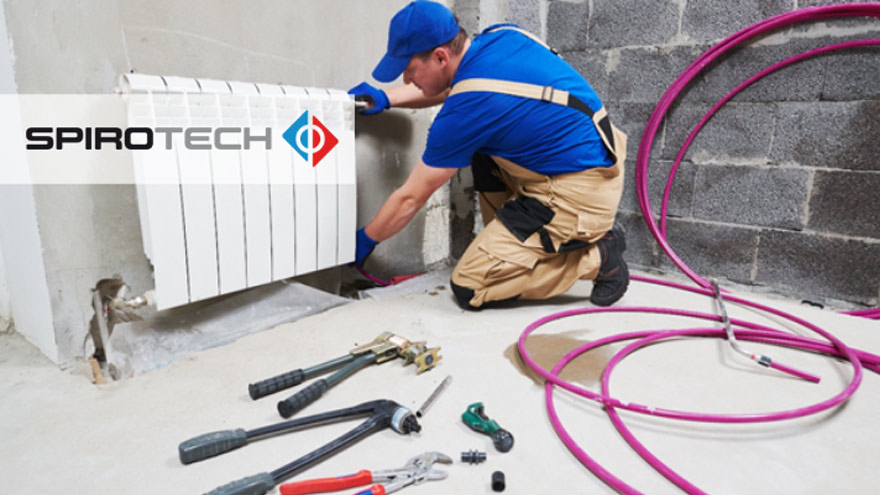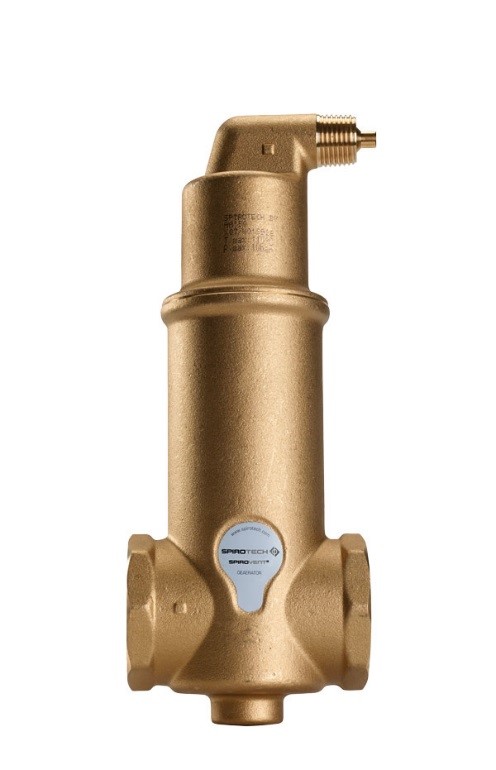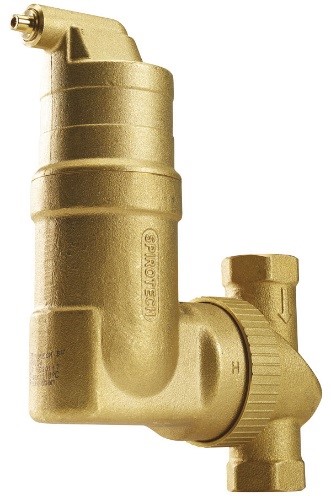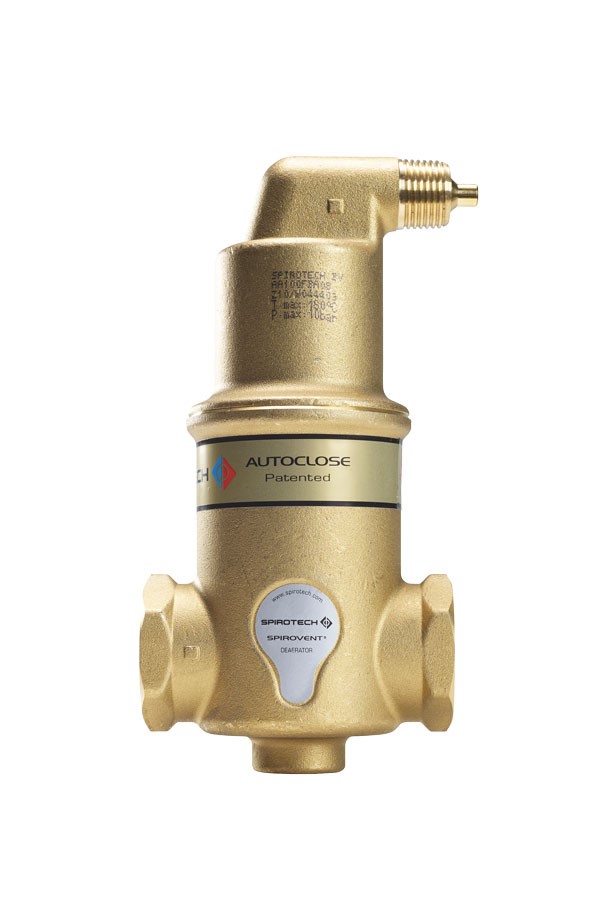The presence of air in heating systems leads to corrosion processes and other physicochemical phenomena that threaten the efficiency and effectiveness of central heating elements. Gases in the installation disturb circulation, reduce the operating efficiency of the installation, and contribute to a significant increase in the operating and maintenance costs of the heating system. Therefore, it is necessary to take appropriate steps to remove air from the system.

In this article you will read about:
- what effect does the air (gases) present in heating installations have,
- how to bleed heating installations,
- what air separators should be used and how to install them correctly.
What are you looking for?
What problems do gases cause in the installation?
The presence of air in the central heating system (and more precisely: any gases in the form of free, dissolved or microbubbles) can lead to numerous problems and system failures, and consequently to failures and defects of the central heating installation.
The condition and amount of air in the installation is determined by Henry's Law. This law states that: the solubility of gases in liquids increases in proportion to the decrease in temperature and increase in pressure of the liquid. Similarly, the solubility of gases in liquids decreases in proportion to the increase in temperature and pressure.
The air present in the central heating system may lead to a decrease in its operating efficiency, disruptions in water circulation, reduced pump efficiency and the risk of their damage, as well as corrosion of the installation. The presence of air in the installation also affects the water pressure in the system. All this results in an increase in home heating expenses and the costs of operating and maintaining the installation. Poor operation of the air-infested part of the installation is mainly due to the noisy flow of liquid. Then we can hear cracks, knocks and noises. The symptoms of an air lock in the pump are noises coming from inside the housing and a decrease in its efficiency. If water circulation in the installation is disturbed, airbags may be the cause. Flow disruptions inside the installation often occur as a result of incorrect operation of diaphragm expansion vessels. In such a situation, check the pressure and then bleed the central heating system
Exchange benefits in the new OnnTop loyalty platform!
The phenomenon of cavitation and its impact on heating installations
Air and unfavorable operating conditions of the installation can lead to damage or destruction of the pump. Gases mixed with water can accelerate wear of the pump's bearings and seals due to improper lubrication and cooling. The phenomenon of cavitation also appears. It involves the formation and disappearance of steam and gas bubbles in pipelines, pump flow channels and fittings. A conscious installer knows that in such situations the pressure in the installation should be checked.
Vapor and gas bubbles appear in areas of lower pressure and rapidly implode in the zone of higher pressure, increasing the pressure of the liquid flowing in these areas to up to 350 MPa. This leads to pitting and damage to the materials from which pipelines and fittings are made. Additionally, the phenomenon of cavitation is accompanied by electrochemical corrosion. These problems are caused by the air in the installations, which leads to a drastic increase in operating and maintenance costs. To protect the heating installation against these problems, automatic air vents and properly selected air separators should be used.
Overview of separators that allow you to remove air from the central heating system
Air appears in three forms in the installation: free air, microbubbles and air dissolved in water. Automatic air vents are able to remove free air and operate mainly when filling or emptying the installation. According to Henry's law, changes in water pressure and temperature in the installation will determine whether air microbubbles will appear or disappear in a given place. A drop in pressure and/or an increase in temperature will cause microbubbles to form, which will be removed by the flow air separator. Therefore, these devices are installed in installations where the temperature is the highest, e.g. in the feed, right after the boiler.
In order to precipitate microbubbles from the water stream, the flow must be disturbed. This is achieved by placing an obstacle in the stream or by forcing this phenomenon using a special design of the device. Such an obstacle - an element that will disrupt the flow in Spirovent separators - is the spirotuba (spiror pipe). Thanks to the special design of the spirotube, very high efficiency was achieved with very small pressure drops. The precipitated microbubbles rise up, where there is an automatic air vent that removes the accumulated air outside the installation. To remove almost all gases from installation water, regardless of pressure and temperature, vacuum separators (vacuum deaerators) should be used.
A wide range of functional, reliable and comfortable air separators are Spirotech ( Spirovent separators ) and Flamco products. Currently, you will find 7 devices that separate air from water on the market, which you can easily adapt to the type and specificity of the hydraulic installation as well as your own needs and preferences.
Brass Spirovent Air separator

The basic separator is the brass SPIROVENT Air separator. This device allows for continuous separation of air and water in the installation. It is installed on horizontal pipelines. It has threaded connections (3/4", 1", 1 1/4", 1 1/2" and 2") and clamp connections (22mm). Working pressure up to 10 bar, temperature up to 110°C. Also available for sale are: separators for installations with pressure up to 25 bar and temperature up to 200°C. For larger, industrial installations, devices are available made of steel, intended for horizontal pipelines in sizes DN50-DN300 (larger ones on request) with welding and flanged connections.
Spirovent RV2 separator

A modern and effective separator that effectively removes air from water is the Spirovent RV2 microbubble separator . This device is made with a rotating flange, enabling installation on horizontal, diagonal and vertical pipelines. Available with 22 mm and 28 mm clamp connections and 3/4", 1", 1 1/4", 1 1/2" and 2" internal threads . Working pressure up to 6 bar, temperature up to 110°C.
Spirovent Solar separator
 If you are looking for a valve for solar installations, be sure to check out the SPIROVENT Solar microbubble separator model. This type of separators is equipped with an AutoClose thermostatic closing mechanism, which prevents the heating medium from evaporating from the solar installation (dry running protection). Basic versions are intended for horizontal pipelines (versions for vertical pipelines are also available). Working pressure up to 10 bar, temperature up to 180°C.
If you are looking for a valve for solar installations, be sure to check out the SPIROVENT Solar microbubble separator model. This type of separators is equipped with an AutoClose thermostatic closing mechanism, which prevents the heating medium from evaporating from the solar installation (dry running protection). Basic versions are intended for horizontal pipelines (versions for vertical pipelines are also available). Working pressure up to 10 bar, temperature up to 180°C.
Installation of separators for central heating
The separators are easy and quick to install. The air separator should be installed as close as possible to the place where the gases precipitate. Typically, the device is mounted directly behind the heating boiler on the supply pipeline.
We cordially invite you to familiarize yourself with our wide range of separators. Removing air from the heating system has never been so easy!
Check out the offer of the Onninen online store
Are you an installer, construction company or institution? At the Onninen hydraulic wholesaler you will find the best brands of products for hydraulic and electrical installations. Check out the store's offer and choose the products needed for central heating installation - pipes, radiators, heat pumps and condensing boilers. Register to OnnTop and exchange benefits on the Onninen loyalty platform.